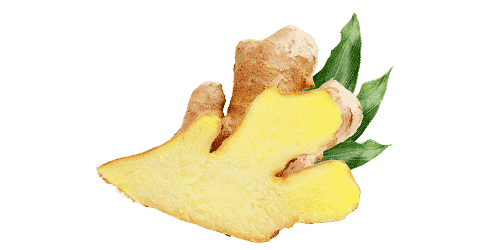
Origin
Originating in Asia, ginger has been used in Chinese pharmacopoeia for over 5000 years. At the time, it was known as "zenj” by Arab merchants who traded their products between Southern Asia, the Roman Empire and Greece, depending on the period. It was one of the first spice products to be imported along the Mediterranean basin.
Did you know?
In the 16th century the Spanish planted ginger in the Caribbean and intensely cultivated it, particularly in Jamaica, for supplying the European markets. It was moreover the Jamaicans that invented and popularised their renowned ginger beer. Jamaica is still one of the main producers of ginger worldwide.
Characteristics
Ginger is a perennial plant, which grows on average up to 1.30 metres in height, has long leaves and flower buds in clusters which group together the green flowers which then become purple with a small yellow stain at the top, reminiscent of the orchid. The plant neither produces fruit nor seeds, it is propagated by its rhizome. Ginger can be used in a variety of culinary dishes. Its spicy flavour particularly complements various Asian and Indian dishes. Its rhizome is also used in phytotherapy.
Cultivation and harvesting
Although it is uncommon to find ginger growing wild, this is because it is widely cultivated in tropical and humid countries such as China, India and Jamaica. As a tropical plant, ginger particularly likes rich and well-drained soils. It also needs heat to flourish. The rhizome is harvested around 9 to 12 months after planting. After being washed and cooked, it is peeled then left to dry for around 8 days. It can then be found in powder or extract form or in the form of a mother tincture for use in phytotherapy.
Benefits
The ginger rhizome contains an essential oil which gives it its aroma. This oil contains various substances such as zingiberene, citrals and monoterpene alcohols. But the rhizome also contains phenols, gingerol, starch, amino acids and essential fatty acids.1
Eating ginger helps to:
- Reduce cellular ageing2
The ginger rhizome contains antioxidants which protect the cells from damage caused by free radicals. This therefore reduces cellular ageing.
- Improve digestion2
Consuming ginger stimulates bile secretion allowing the liver to function more effectively, which as a result improves digest.
- Relieve joint pain1
Essential oil of ginger has the power to relieve joint pain and helps to maintain the joints in good health.
1Plant-based health: 200 plants with health benefits Reader’s Digest selection, 2003. 352 p. ISBN 2-7098-1413-7
2https://www.guide-des-plantes.com/gingembre/#Origine_et_historique
